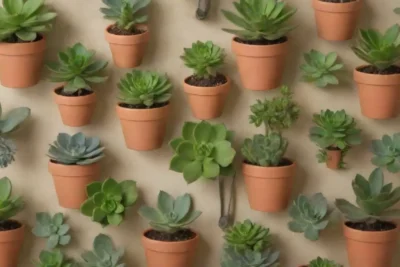
Understanding the Tools Needed for Succulent Landscape Design
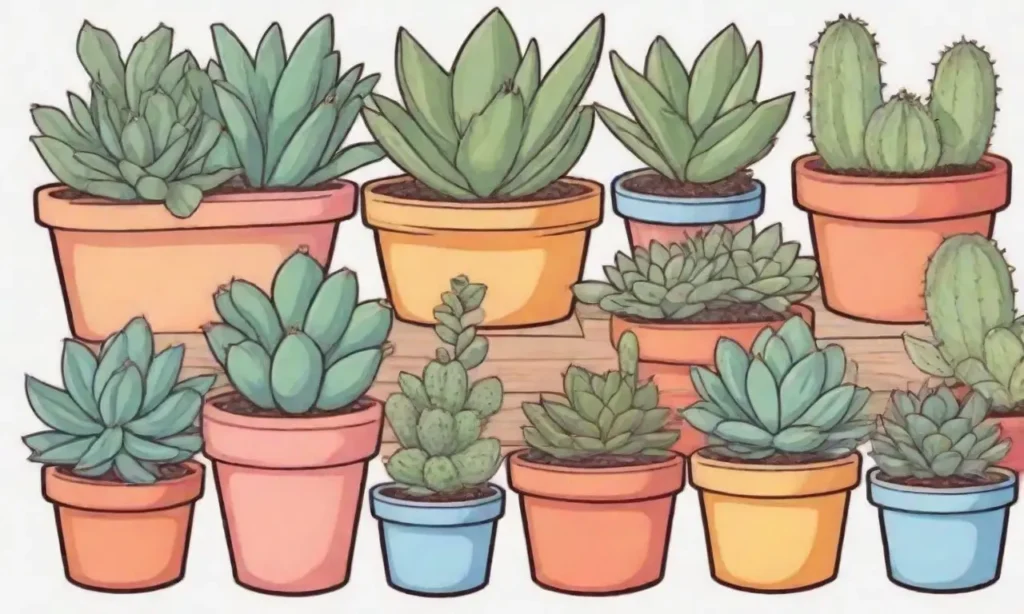
Introduction
Designing a succulent landscape is an art that combines creativity with an appreciation for the unique characteristics of succulent plants. These plants, known for their water-storing capabilities, vibrant colors, diverse shapes, and textures, are favored in various landscaping projects due to their low maintenance requirements and adaptability to arid conditions. The appeal of succulent landscaping has grown significantly, and it serves both aesthetic and practical purposes, including drought resistance and ecological benefits.
This article aims to provide readers with an extensive understanding of the essential tools needed for succulent landscape design. We will discuss a range of tools, from basic gardening instruments to specialized equipment designed to enhance the design process, as well as tips on how to effectively use them to create stunning and thriving succulent environments.
Understanding the Importance of Tools in Succulent Landscape Design
Creating a beautiful and functional succulent landscape requires more than just the plants themselves; the right tools are crucial for effective design and maintenance. The landscape designer’s toolkit serves as an extension of creativity, allowing
for precise plant placement, effective soil management, and efficient care.
Tools facilitate various tasks essential to a successful landscaping project, including digging holes for planting, pruning or shaping succulents, and ensuring proper drainage. Properly chosen tools also help prevent damage to delicate plants, ensuring they thrive and contribute to a stunning design. With the right set of tools, you can alleviate strenuous labor, work more efficiently, and ultimately create a succulent landscape that shines with vibrancy and continuity.
Moreover, understanding each tool's purpose can help new landscape designers make informed decisions on which tools to purchase, ultimately tailoring a toolkit to fit individual needs. This comprehensive understanding not only aids in effective execution but also fosters a deeper appreciation for the delicate artistry involved in succulent landscape design.
Essential Tools for Planting and Soil Preparation
1. Garden Spade
A garden spade is an indispensable tool for any succulent landscape project. Its strong, flat blade is perfect for digging up the soil, which is necessary for preparing beds or containers for planting. When selecting a spade, look for one with a comfortable grip and a sturdy edge to ensure ease of use and longevity.
Using a garden spade, you can effectively break up compacted soil, making it easier for the succulent roots to penetrate and establish themselves. Additionally, a spade is useful for mixing in amendments such as perlite or sand to create the well-draining soil environment necessary for succulents to avoid root rot caused by excess moisture.
 Cloning Your Succulents: Practical Tools for Propagation Success
Cloning Your Succulents: Practical Tools for Propagation SuccessWhen creating a succulent garden bed, the garden spade can also help you create defined edges and a consistent shape. Ensure you remove any existing weeds or debris from your workspace while preparing the soil to create a clean canvas for planting.
2. Hand Trowel
Another must-have in succulent landscaping is the hand trowel. This small, handheld tool allows for precise digging and planting in tighter spaces, making it ideal for container gardens, rock gardens, or other intricate designs where you may need to maneuver around existing plants.
When using a hand trowel, it's important to pay attention to the depth and spacing of the holes you create for planting your succulents. Generally, the holes should be slightly deeper than the roots of the plant to ensure proper anchoring and soil coverage. Therefore, a hand trowel not only aids in digging but also serves as a guide for spacing plants appropriately in the design layout.
Beyond planting, hand trowels are useful when mixing soil amendments directly into the potting mixture before placing succulents in their designated spots. This versatility makes the hand trowel an essential companion during the planting phase.
3. Soil Leveling Rake
A soil leveling rake is especially important when establishing larger succulent beds. This tool helps to even out the surface of the soil to create a visually appealing planting area. By drawing or pushing soil to create a level surface, a soil leveling rake also minimizes the risk of water pooling, which can be detrimental to succulent health due to its propensity to attract rot.
Using this tool, you can ensure that your succulent landscape design has a consistent appearance and is aesthetically pleasing from all angles. Furthermore, the leveling rake can help mix in any nutrients or amendments you plan to use, ensuring that they are uniformly distributed throughout the planting area.
Investing in a durable and ergonomic soil leveling rake can save you significant time and energy during larger projects by making soil preparation a smoother process.
 How to Choose the Best Fertilizing Tools for Your Succulents
How to Choose the Best Fertilizing Tools for Your SucculentsTools for Plant Care and Maintenance
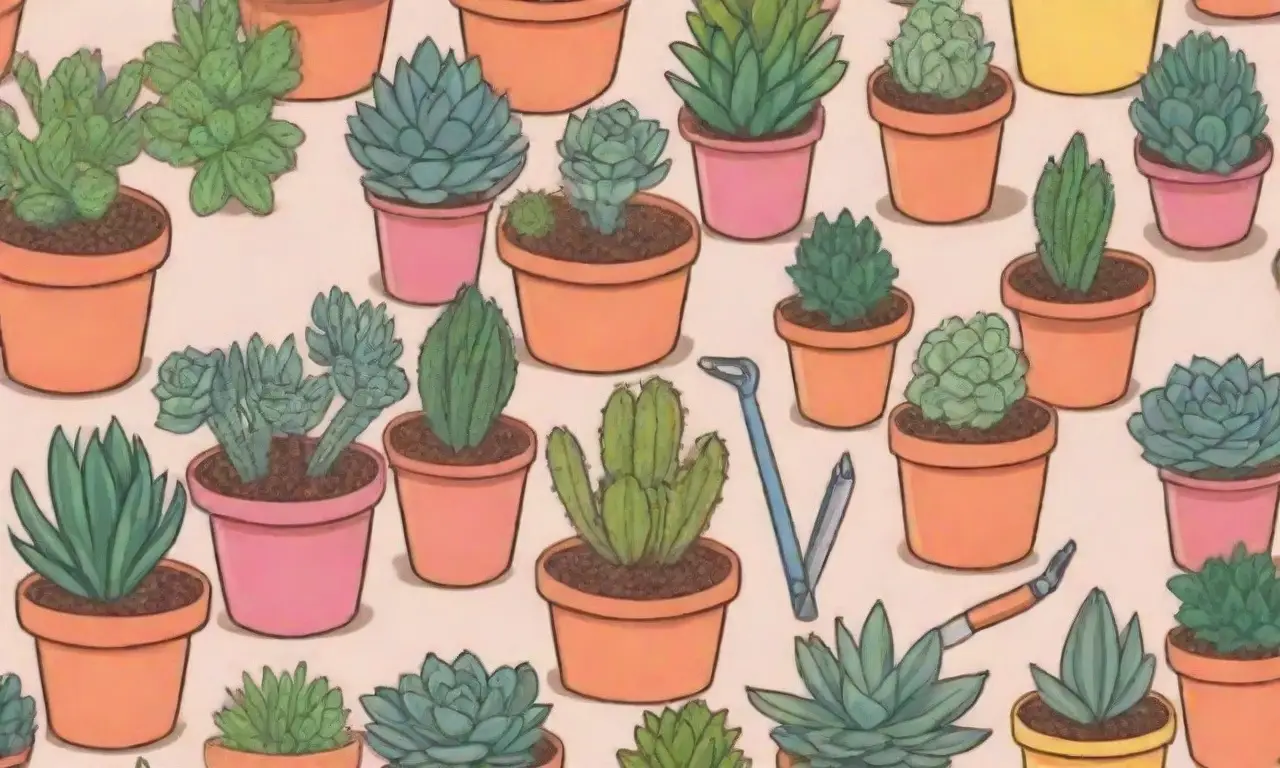
1. Pruning Shears
Pruning shears are essential tools for maintaining succulents and ensuring their health post-planting. Succulents can require occasional trimming to promote new growth, manage their shape, and remove any dead or damaged leaves. Using sharp, clean pruning shears can make this process easier, reducing the risk of injury to both the plant and yourself.
When using pruning shears, it's beneficial to familiarize yourself with the different cuts you might need: pinch, cut, and shear. Pinching involves removing small, unhealthy leaves with your fingers, while cutting involves making clean, deliberate cuts in stems, allowing for better air circulation and improved overall health of the plant. Suitable pruning increases plant vitality and encourages bushier, healthier growth.
Moreover, regular maintenance through pruning can help you manage the visual balance of your succulent landscape. Allowing excessive growth to go unchecked can result in an unkempt appearance, distracting from the overall design aesthetics. Thus, having quality pruning shears in your toolkit contributes to the longevity and beauty of your succulent arrangement.
2. Watering Can with Adjustable Nozzle
Because succulents require specific watering techniques, having a watering can with an adjustable nozzle can make a significant difference in how you care for them after planting. Overwatering is one of the primary causes of succulent plant failure, so it's essential to control how much water you deliver to each plant.
With an adjustable nozzle, you'll have the ability to customize the flow of water, allowing it to pour gently and precisely. This is particularly useful when watering newly planted succulents, as their root systems are still establishing, and you want to avoid flooding the base.
Furthermore, using a watering can prevents excess water from splashing onto surrounding soil, which can disturb seedlings and cause soil erosion. As such, a watering can with an adjustable nozzle is not just a preference but an important environmental consideration for maintaining the integrity of your succulent landscape.
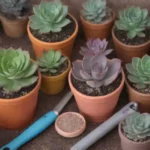 Creating a Perfect Succulent Garden with the Right Tools
Creating a Perfect Succulent Garden with the Right Tools3. Hose with a Spray Nozzle
For larger succulent garden projects, a garden hose equipped with a spray nozzle adds convenience and efficiency to the watering process. A hose allows you to cover larger areas with ease, while the adjustable spray nozzle lets you choose a gentle mist for delicate seedlings or a strong stream for established plants.
This tool becomes particularly crucial during times of seasonal changes, such as transitioning from cooler to hotter climates, when succulents may require more frequent watering. Having the ability to adjust the spray also helps prevent oversaturation of the soil, which is essential in maintaining the health of your succulents.
In a succulent landscape design, the time you save with an efficient watering system allows you to focus on creating patterns and arrangements, further enhancing the overall aesthetics of your space.
Conclusion
In summary, creating a stunning and thriving succulent landscape design involves much more than choosing the right plants and arrangements. It requires a thoughtful approach to the tools that will assist in both the planting process and ongoing care. From basic equipment such as spades and trowels to specialized tools like pruning shears and adjustable watering systems, each item in your toolkit plays a vital role in the health and longevity of your succulent garden.
Understanding and utilizing these tools effectively can significantly enhance your landscaping design experience. Not only do they contribute to efficient planting and maintenance, but they also help prevent accidents and ensure that delicate plants are treated with the utmost care throughout the landscaping process. As you prepare to embark on your succulent landscape project, remember to consider each tool's functionality, durability, and suitability to your specific gardening needs.
Ultimately, the joy of succulent landscaping lies in the balance between art and nature. With the right tools, you can express your creativity while fostering a thriving ecosystem that brings beauty and sustainability to your outdoor spaces. By investing time in the right tools and understanding their functions, you will enhance your landscape design skills and find great satisfaction in nurturing your plant creations. Happy gardening!
 Seasonal Gardening Tools for Year-Round Succulent Care
Seasonal Gardening Tools for Year-Round Succulent CareIf you want to read more articles similar to Understanding the Tools Needed for Succulent Landscape Design, you can visit the Gardening Tools category.

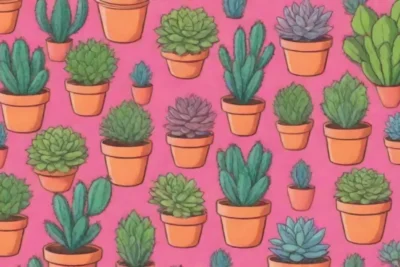
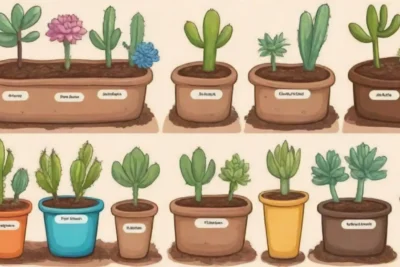
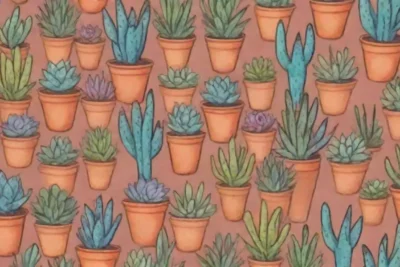
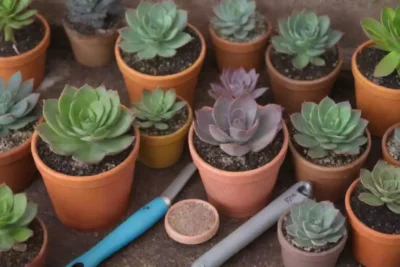

You Must Read